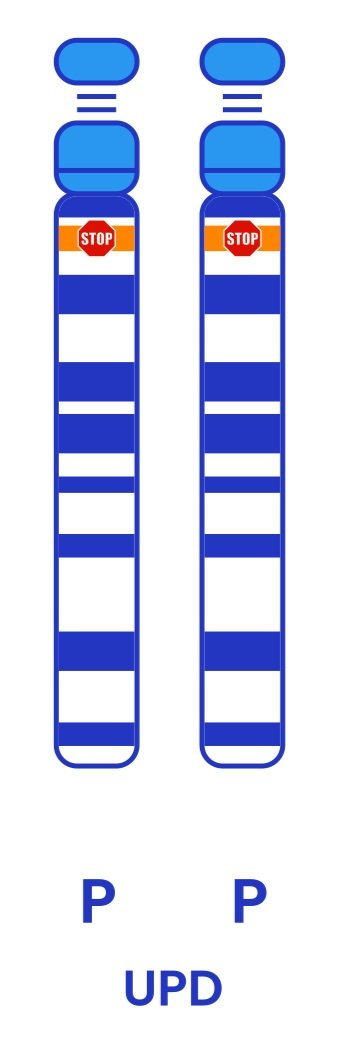Couragene’s therapeutic pipeline focuses on bringing out the impact of genetic medicines by harnessing the first-in-class STEP technology to address the delivery constraints. Couragene is actively advancing multiple disease programs, including neurogenetic diseases.
Angelman syndrome (AS) is a genomic imprinting disorder caused by a loss of function in the UBE3A gene on the maternal chromosome 15q11-q13. In a normal person, the maternally inherited UBE3A gene is active, while the copy of the gene inherited from the father is silenced in the neurons in our brains (genomic imprinting). For people with AS, this maternal gene is deficient due to deletion, mutation, etc. of maternal UBE3A allele.
Source: FAST (cureangelman.org)
The expression of UBE3A in neurons can be activated through inhibition of non-coding antisense RNA of UBE3A (UBE3A-ATS). The reactivation of UBE3A to as little as 1-10% of normal levels may rescue phenotypes. Ongoing clinical trial investigates whether antisense oligonucleotides (ASO) targeting UBE3A-ATS can improve manifestations of AS. However, ASOs offer only a transient suppression effect and long-term efficacy requires frequent repeated intrathecal (IT) dosing, which significantly increases patient burden and the possibility of off-target effects. Genome editing strategy has a significant advantage over ASO therapy due to its permanent nature. However, delivery of gene editors is a major challenge.
Couragene’s STEP technology enables efficient delivery of CRISPR-Cas9 gene editors into the brain for efficient penetration and editing in neuronal cells. It has been demonstrated that Couragene’s STEP-CRISPR treatment led to brain-wide persistent reactivation of Ube3a from paternal chromosome in an AS mouse model after single administration of STEP-CRISPR. In addition, single administration of Couragene’s STEP-CRISPR enables efficient expression of paternal Ube3a to ameliorate neurobehavior of maternal Ube3a deficient AS mouse model.
Couragene’s first-in-class STEP technology also shows great potentials to enable a wide variety of genetic medicines across many other therapeutic areas.







